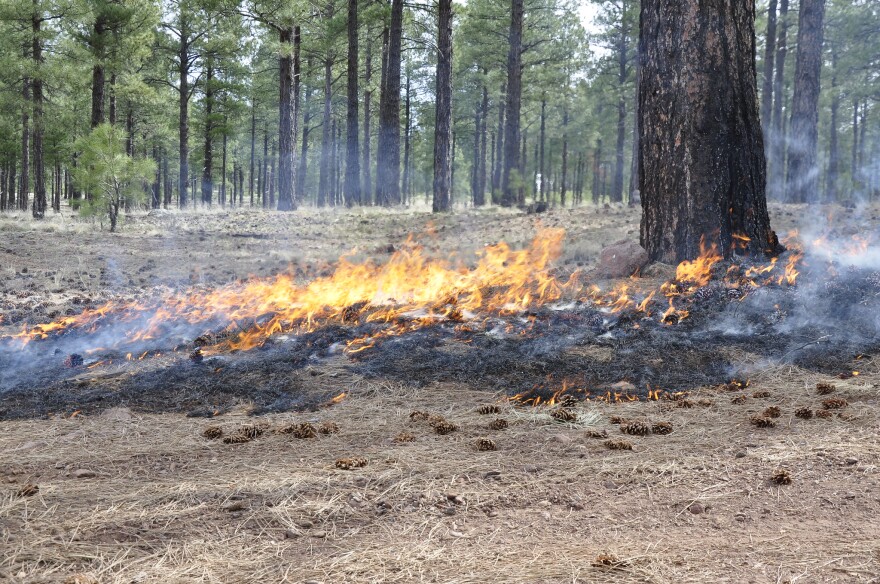Institutes in Arizona, Colorado, and New Mexico received 20 million dollars to research the nation’s forests and learn the best methods for reducing the risk of catastrophic wildfires. The money comes from the recent Infrastructure Investment and Jobs Act. KNAU’s Melissa Sevigny spoke with Andrew Sánchez Meador of Northern Arizona University’s Ecological Restoration Institute about the project.
The money we’re talking about actually went to the Southwest Ecological Restoration Institutes, which is a collaborative. Can you tell me about it?
The Southwest Ecological Restoration Institutes, we like to call it the SWERIs, they’re a congressional authorized and appropriated program…. basically on the heels of those early 2000, Rodeo-Chediski, Cerro Grande, all those big fires in the early 2000s, kind of the heels of that to address the lack of understanding, a lack of a pathway forward for forest restoration, and making our forests and forest communities resilient to wildfires.
Tell me about the funding that came down from the infrastructure act, what is it meant to be used for?
The SWERIs were called out specifically in the Infrastructure Investment and Jobs Act, which is kind of unique, I don’t know of too many other non-federal entities that were called out in it…. They basically asked the SWERIs to undertake this large mapping and data integration and sharing effort… Fire doesn’t care who owns the land or manages it, and so…. just housing the data and providing it and getting it into a system where people have access to it, is one objective. The other objective on top of that is looking at treatment effectiveness, and what types of treatments are working in what types of forests.
It’s a national effort, you’ll be looking at all different types of forests, right?
Yeah, a national effort, all types of forests. We anticipate that the things we do in the Southwest as SWERIs may not work everywhere. We may have to engage entities in Florida or Alaska that we don’t normally engage in Arizona, New Mexico, and Colorado. There’s a component in the beginning of this project that’s going to have to be around scoping, and ensuring that we have the right people at the table, and ensuring that this data product that will be put together and the outcomes from it will be useful for the largest group possible.
Tell me more about that. Why is it important we do this type of research?
For a few reasons. Congress appropriates dollars, they give it to these agencies that then do fuels treatments to implement fires, or respond to wildfires, and the American taxpayer wants to know their dollars are being used wisely. Being able to objectively look at this is important. We also want to make sure we’re doing things the best way we can. As climate continues to change in a variety of ways across this country, as jurisdictions change, and the way people approach problems change, we want to make sure we’re learning the most we can. We also want to make sure that we’re continuing to manage our forests so they’re sustainable and they’re available for future generations. On top of that, we want to make sure we manage our forests in a way that ensure that we always have forests, and they’re not being converted to burned landscapes or grasslands or shrublands, and we’re not losing that resource that’s important to our communities and economies.
Thanks so much for speaking with me, I appreciate it.
Of course.




